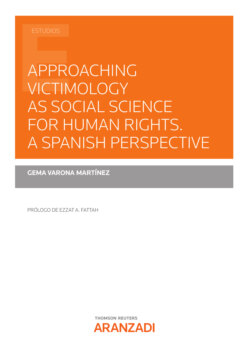Читать книгу Approaching Victimology as social science for Human rights a Spanish perspective - Gema Varona Martínez - Страница 32
На сайте Литреса книга снята с продажи.
1.3. THINKING ABOUT PHOTOJOURNALISTS’ ROLE IN MAKING SEVERE VICTIMISATION VISIBLE AND REPARABLE: ON VISUAL VICTIMOLOGY
ОглавлениеThe above paragraphs concentrate mainly on common victimisations. In this section, we also want to reflect on the role of journalists as witnesses of severe victimisation and the risks that this entails, in particular for photojournalists. This topic can be related to the emergent trend called visual Victimology (Herrera, 2018; Varona, 2015).
The etymology of the word photography is writing or drawing with light. Photography is viewed both as an art and a technology for recording reality. It is also a technique or instrument for qualitative research in visual anthropology, sociology, criminology and Victimology. Above all, photography is a way of communication. Photography can express dimensions of victimisation and recovery in ways victimological research cannot reach because of the limits of the scientific method. The understanding of any photographic expression will depend, both in public and private spaces, on the eyes and context of the observer, particularly if they were victims. Despite this introspective character, photography has a public and activist character concerning digital memory and recovery from traumatic victimisation. It makes visible the invisible dimensions of victimisation.
Photography is not as spectacular as a monument. It is conceived as the art of seeing life in space and time. When we look at a picture we simultaneously see past and present in a continuum of recorded and unrecorded objects and effects. For this reason, it holds great potential for communicating messages related to the memorialisation of harm.
In any case, many questions remain on the function of photojournalists. Are photographers partial as witnesses or narrators of objective and subjective dimensions of victimisation? To what extent is photojournalists’ work more related to artistic photography where the audience might have more open space for interpretation? Finally, the important role of journalists, in general, as witnesses does not neglect the partial political dimensions of any kind of photography and journalistic account, following the seminal work of Susan Sontag (2003).
